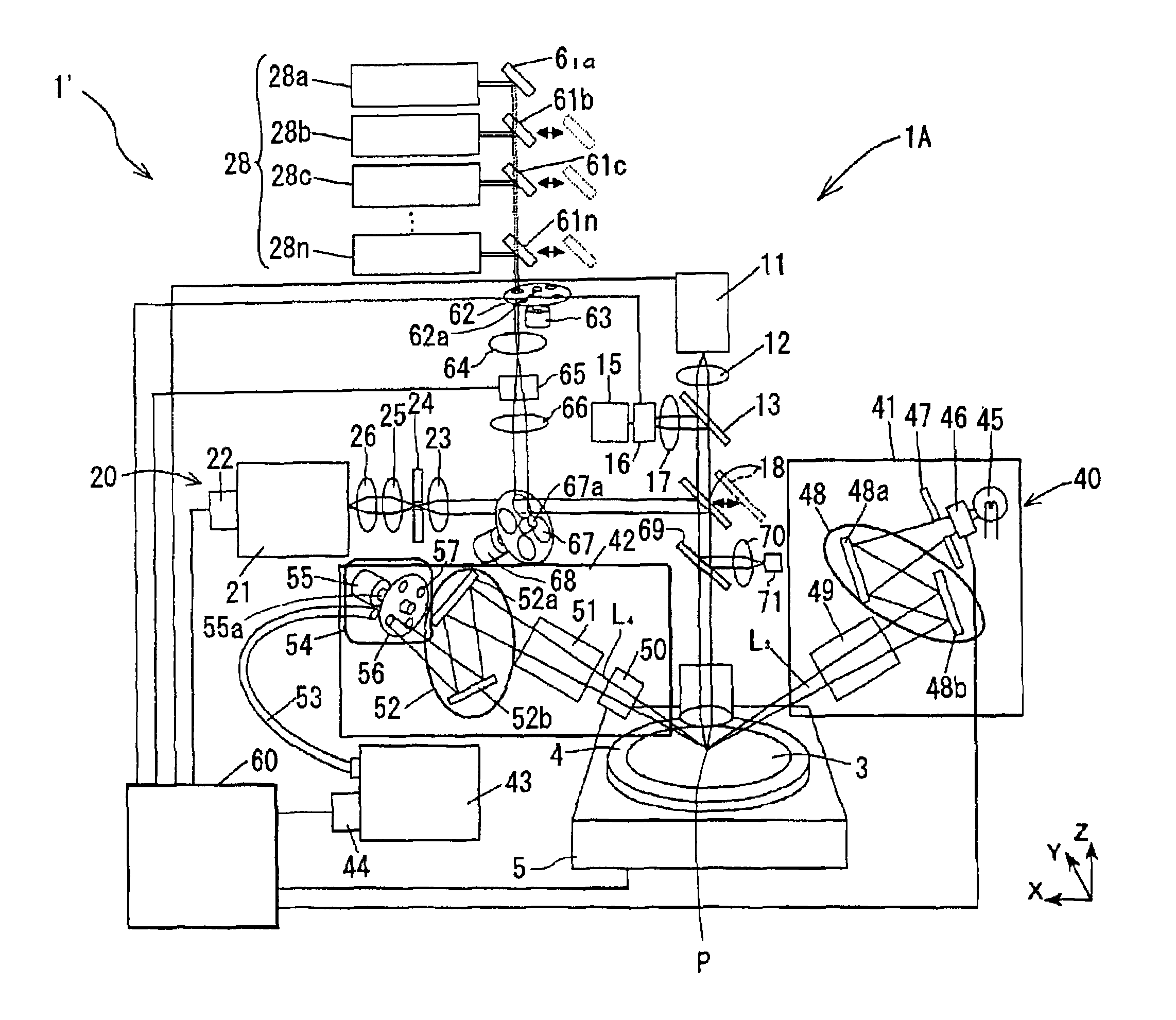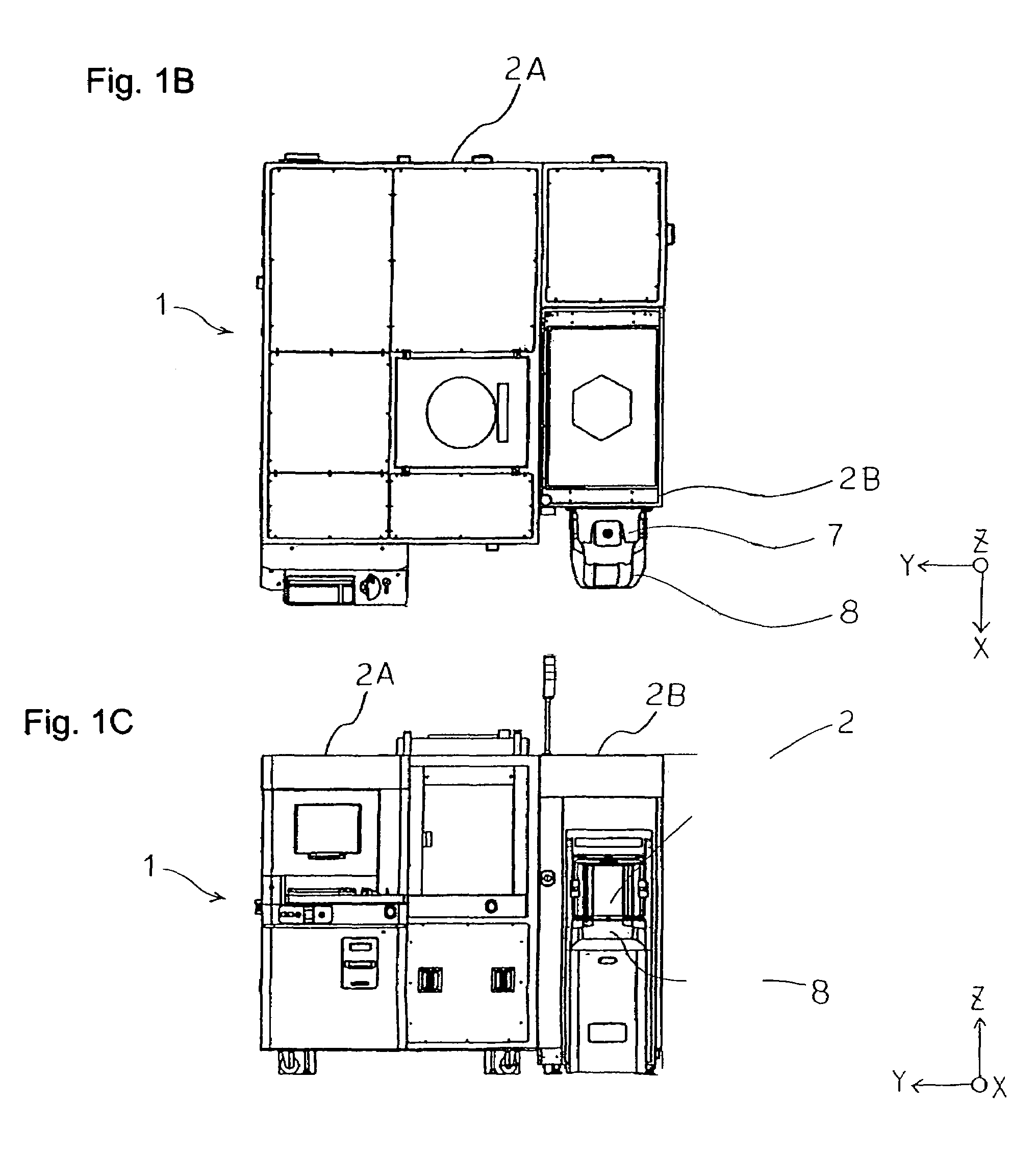Method of and apparatus for measuring stress of semiconductor material
a technology of stress measurement and semiconductor material, which is applied in the direction of optical radiation measurement, instruments, spectrometry/spectrophotometry/monochromators, etc., can solve the problems of large error in a predetermined stress measurement, inability to measure the raman spectrum of the sige layer b>3/b>c, and become very difficult to ensure predetermined measurement accuracy and measurement reproducibility, etc., to achieve high degree of accuracy, high speed, and accura
- Summary
- Abstract
- Description
- Claims
- Application Information
AI Technical Summary
Benefits of technology
Problems solved by technology
Method used
Image
Examples
first embodiment
[0042]FIG. 1A is a plan view schematically showing an entire configuration of a substrate inspection apparatus 1 according to the present invention and FIG. 2 is a view showing a configuration of a stress measuring system as a main part of the substrate inspection apparatus 1. In FIG. 1A, 2A is a measuring chamber of the substrate inspection apparatus 1 equipped with a Raman spectroscopic optical system / ellipsometric optical system, 2B is a transport equipment set up next to the measuring chamber 2A, 3 is a substrate (sample, hereinafter referred to as a wafer) of for example, a silicon wafer formed by applying the strained silicon technique where the thin film of silicon layer is formed on the SiGe layer with large lattice constant, 4 is a sample stage configured so as to be movable in a three-dimensional direction of horizontal direction (X, Y directions) and height direction (Z direction), and 5 is a driving section of the sample stage 4.
[0043]In FIG. 1A, 6 is a robot arm with a ...
second embodiment
[0107]In the substrate inspection apparatus 1′ not only the stresses σ1 and σ2 of the strained silicon layer 3D and the SiGe layer 3C can be measured by the Raman spectroscopic optical system 20, but also the film thickness and the refractivity can be highly accurately measured by the ellipsometer optical system 40. Thereby, when the semiconductor substrate using the strained silicon, which has been increasingly used in the manufacturing of the semiconductor device in recent years, is used as the measuring object, the respective physical quantities such as the internal stresses of the strained silicon layer 3D and the SiGe layer 3C which is the ground layer thereof and the Ge content in the SiGe layer 3C can be reliably measured so that the substrate can be highly accurately inspected.
[0108]However, because the present invention is aimed at measuring the stresses of the strained silicon layer 3D and the SiGe layer 3C which is the ground layer thereof in the semiconductor material (...
PUM
| Property | Measurement | Unit |
|---|---|---|
| wavelengths | aaaaa | aaaaa |
| temperature | aaaaa | aaaaa |
| wavelength | aaaaa | aaaaa |
Abstract
Description
Claims
Application Information
 Login to View More
Login to View More - R&D
- Intellectual Property
- Life Sciences
- Materials
- Tech Scout
- Unparalleled Data Quality
- Higher Quality Content
- 60% Fewer Hallucinations
Browse by: Latest US Patents, China's latest patents, Technical Efficacy Thesaurus, Application Domain, Technology Topic, Popular Technical Reports.
© 2025 PatSnap. All rights reserved.Legal|Privacy policy|Modern Slavery Act Transparency Statement|Sitemap|About US| Contact US: help@patsnap.com



